Last Updated on 04/27/2012 by Chris Gampat

Light meters are one of those things that can start a comment war online. Some photographers swear by them and others say there is no way you need one because of how accurate camera metering systems can be nowadays. While it is true that today’s cameras do have very sophisticated metering systems, a light meter will give you much more accurate results ultimately giving you a better idea of how the image will look before taking the picture. One of the more popular light meters out there today is the Sekonic L-358 Flash Master Light Meter and I was able to get my hands on it. Click through to see how it does.
Design
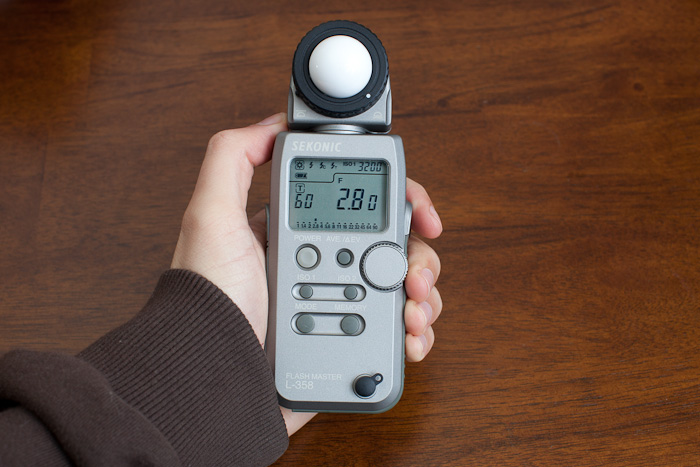
Specs from B&H Photo/Video:
| Measuring System | Incident: Dual retractable lumisphere, Reflected: with included reflected light attachment; Silicon photo diodes |
| Measuring Modes | Ambient and flash (cord, cordless, multi flash) – incident and reflected (54 degrees) |
| Receptor Head | Rotating 270 degree with built-in retractable lumisphere |
| Aperture/Shutter Priority | Aperture and shutter priority |
| Display Readout | Digital LCD plus LCD analog, (auto-backlit LCD at EV 3 and under for 20 sec.) |
| ISO Range | Dual ISO settings: 3 to 8000 (1/3rd steps) |
| f/Stop Display Range | Incident/Reflected: f/1.0 to 90 9/10 (full, 1/2 or 1/3rd steps) |
| Shutter Speed – Ambient | 1/8000 sec. to 30 minutes |
| Shutter Speed – Flash | 1/1000 sec to 30 minutes |
| EV Range (ISO-100) | Flash: EV -2 to 22.9 (Incident/Reflected) |
| Cine Speeds | 2 – 360fps |
| Exposure Memory | Capable of nine exposure measurement readings |
| Shadow/Highlight Calculation | Yes |
| Brightness Difference | Displays the difference in 1/10 stop increments |
| Flash to Ambient Ratio | Yes |
| Multiple Flash | Yes, unlimited |
| Exposure Calibration | +/- 1.0 EV |
| Power Source | 1 CR123A lithium battery |
| Dimensions | 2.4 x 6.1 x 1.46″ (60 x 155 x 37mm) WHD |
| Weight | 5.4 oz (154g) |
| Specialties | All weather design; Radio triggering with optional RT-32 Radio Transmitter Module (max. distance is 100ft); Compatible with PocketWizard Digital Radio Receivers; 16 standard PocketWizard Channels (#1-16) and 16 “Selective Quad Triggering” multi-zone channels (#17-32) are accessed through the meter’s integral software and displayed on its LCS panel. In Selective Quad, up to 4 zones of lighting can be individually triggered and measured wirelessly by the meter |
The L-358 is a perfect size for a handheld light meter. It will fit in just about any pouch or space in your camera bag.
Most of the time you will be using the light meter with the lumisphere extended but you also have the ability to retract it to meter more directional light. The head on the meter rotates fully around which can be useful for taking meter readings from any angle while always having the LCD readable.
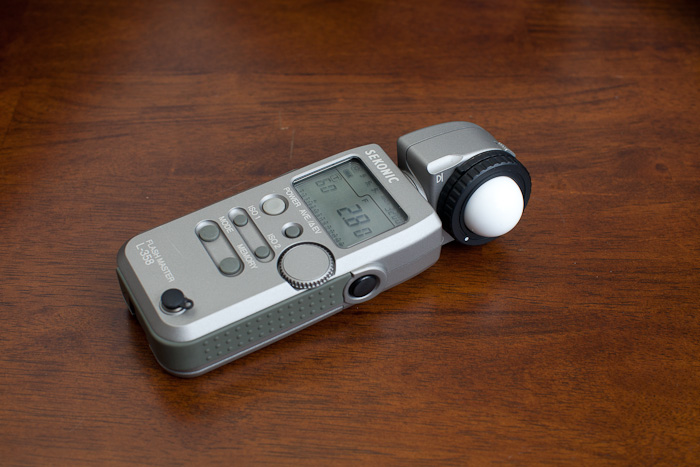
Although the unit can perform very advanced functions, it’s quite easy to just pick it up and go. The buttons are fairly self explanatory as well. Power, 2 separate ISO buttons to quickly switch between two different shooting scenarios, a jog wheel for changing settings, a Mode button, and the Measure button on the side to trigger the light meter. There is also a Memory button and an Average/EV button for more advanced metering.

The battery compartment on the back also houses a couple extra things. First are 4 DIP switches to change or activate certain settings. One is to turn on the ability to measure ambient light, another to turn on multi flash support, another for shutter speed/aperture display settings, and finally one for changing whether stops change by 1/3 or 1/2. Default is 1/2 which I found odd as most cameras now days go by 1/3. The other compartment back here is saved for the optional Sekonic 401-621 Transmitter Module to open a new mode on the meter that allows you to trigger and measure flashes connected to Pocket Wizards.
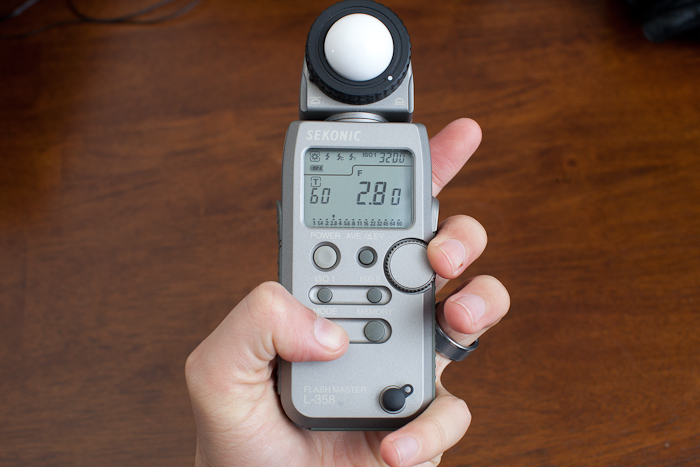
My one complaint about the design was the way you change settings. You have to hold down the desired setting’s button, and spin the jog wheel. Not that big of a deal but because of the size of the unit in my hand, I was unable to do this with one hand. For instance, if I wanted to change the ISO setting, I had to put down my camera or cradle it in my arm, hold down the button with one and and spin the jog wheel with another. I feel some more thought could have gone into making this a one-handed operation.
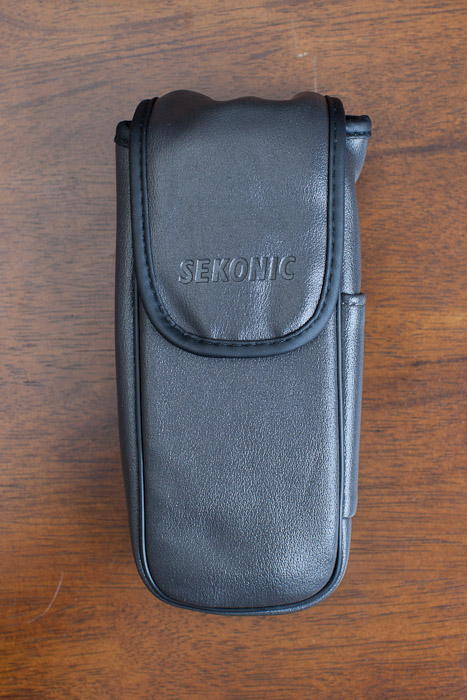
Modes
The L-358 offers four metering modes. Three of these modes are for metering flash and one is for metering ambient light.
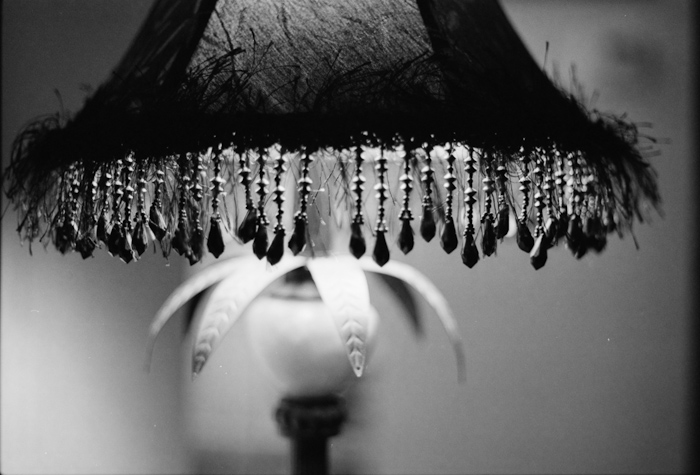
First is the ambient metering mode which has two sub-modes, shutter-priority and aperture-priority. For these modes you enter in one of the numbers that you want to use and it will tell you the other. These act just like your cameras corresponding modes work except the meter is measure direct light hitting your subject vs your camera reading reflected light come back from your subject. This is where a light meter can give you better results even for something that your camera seems to do fine already. This however doesn’t work when shooting something far away as you would have to walk the meter all the way over to that beautiful mountain and take a reading. Best to rely on your cameras built-in, reflective light metering system (even though some higher-end light meters do include this ability like Sekonic’s L-758 series units).
The next is mode is to measure light when using a corded strobe. Just plug the strobe’s synchro cord into the receptacle on the L-358, choose your shutter speed (and ISO) and measure. It will tell you what aperture to use to exposure for the strobes current output.
The third mode is identical to the last one except for using your flash wirelessly. The trick here is you still have to trigger the strobe somehow. You press the measure button and the meter with wait up to 90 seconds to sense a flash go off and then display the proper reading. This works best with an assistant as the meter must be where your subject will be and then you have to trigger the flash somehow.
The last method is only available when the optional Pocket Wizard module is installed in the back of the unit. This is by far the best option if you already use Pocket Wizards as it will trigger the flashes remotely the instant you hit the measure button. Press the button, pop, you have your reading.
Use
First, let me throw my two cents into the argument about whether a light meter is needed. Now that I’ve had some time with one, I find myself wanting to purchase one after I have to send the review unit back. They definitely aren’t required when using digital cameras and strobes due to the instant review ability after we take the image but I did take quite a bit of comfort when setting up my strobes, measuring them with the L-358, dialing those setting into my camera, and shooting knowing the exposure would be perfect for that light setup. No more “test” shots other than moving the lighting to shape it how I wanted.

Where the light meter came in to play big time was shooting with strobes and film. I recently got into film and have started a project this year to shoot one roll of film every week for 52 week (read more about Project OneRollFifty2 and follow the progress here). The light meter is invaluable when using off-camera lighting and film as you don’t get the instant review luxury of digital and every shutter click is money.

The L-358 gave very accurate and consistant meter readings the whole time I had it. This was no more evident that when using it for film. Take a look at the photo below which I really wouldn’t trust my film camera’s sensor to get it right the first time but I wouldn’t even know if it was wrong. I used the L-358’s ambient meter mode for this picture, dialed in the setting, only shot one frame and it came out perfectly.
The photo below was the first frame I shot from a photo shoot and as you can see, after using the L-358 first, the lighting was perfect right off the bat.

Here I used it to meter for a strobe and soft box for some product photography of my Canon AE-1. Again, even the first shots were perfectly lit.

The L-358 even has more advanced options that I didn’t even get into like the ability to store up to 9 different readings in memory and average them (useful when using lots of lights), brightness difference to check exposure levels between multiple strobes, a mode for measuring ambient light for shooting video, and dialing in exposure compensation right into the meter.
Conclusion
I think of flash meters from two different thought processes. The difference being whether you’re using digital or film. Using film with strobes is a no-brainer. You need a light meter. If you aren’t using strobes, a light meter will still give you much more accurate readings for your film camera than the internal metering system probably can.
For digital, it’s still debatable for me. I will say that it almost completely takes the testing stage out of using off-camera flash and allows you to shoot sooner and longer. Therefore I would consider this purely a tool to make your life easier on set.
With all the talk about needing or not needing a light meter, the Sekonic L-358 Flash Light Meter is a fantastic option, preferably if coupled with the 401-621 Transmitter Module when using Pocket Wizards. It gives very accurate readings and delivers a rather robust feature set while staying at a price point that won’t break the bank.
If you found this post helpful and would like to be a part of helping them continue, please consider donating through PayPal.
Please Support The Phoblographer
We love to bring you guys the latest and greatest news and gear related stuff. However, we can’t keep doing that unless we have your continued support. If you would like to purchase any of the items mentioned, please do so by clicking our links first and then purchasing the items as we then get a small portion of the sale to help run the website.

